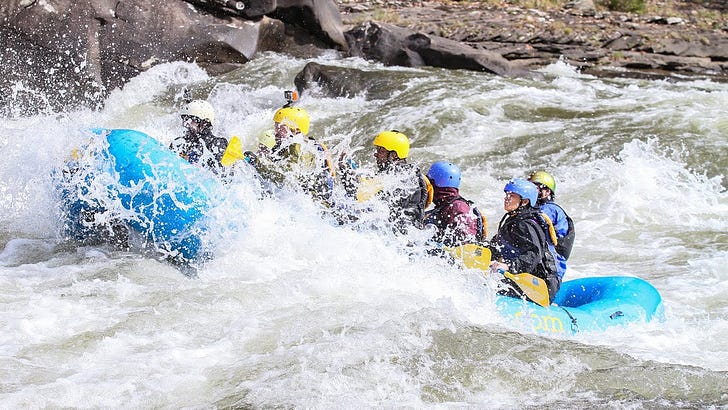Rafting the Lower Gauley
I traveled through West Virginia recently on a train and made the most of the fact that Ace Raft is a three mile hike from the Thurmond Amtrak. Timing had it that I could stop by for the last weekend of Gauley Season and all of the river carnage that it brings. It was October in Appalachia with morning temperatures just low enough to bite. Leaves turn into fire and gold, and the river charges its way down the canyon, thanks to the dam release up in Summersville.
We arrived on a bus at the boat launch just above the Fuzzy Box of Kittens rapid and Woods Ferry, which separate the Upper and Lower sections of the Gauley. It’s a wild Class III-V river throughout, although my paddle down the Lower Gauley today would hopefully be more forgiving. The Upper section is famous for its huge powerhouse rapids that go back to back for 13 miles. And while the Lower Gauley has its share of that too, it is altogether calmer, more scenic, and spaced out. The trip would mostly amount to floating down easy flatwater and enjoying the fall colors and brisk mountain air.
Mostly.
We were just getting started on the second rapid, Woods Ferry, when we ran into a bit of a scuffle. Halfway through, the raft got stuck on a ledge and one guy almost fell out. By a miracle, he landed on a rock and it kept him up just long enough for his buddies to pull him back. The guide, Bobby, yelled at us to paddle, trying to steer clear of the Juicer, a huge slanted boulder at the bottom that nearly always flips a raft. We bumped right into it, and amazingly the boat stayed up and went back into the current.
Our problem was that we weren’t paddling together as a group. You have to go together at full momentum to get the power you need to bust through this kind of water. Bobby had us practice our paddling moves in flat water, but I was still nervous and unsure if we could get through this. It was game time again soon enough. Bobby sent us charging through a huge wave train in Back Ender, then an even bigger series of hits in Koontz Flume, the first Class V of the day. We minded a house sized undercut boulder on the right and slammed through four big wave holes.
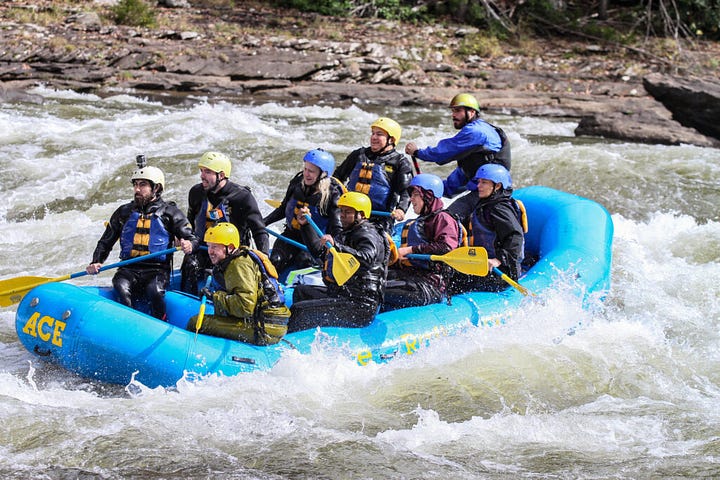
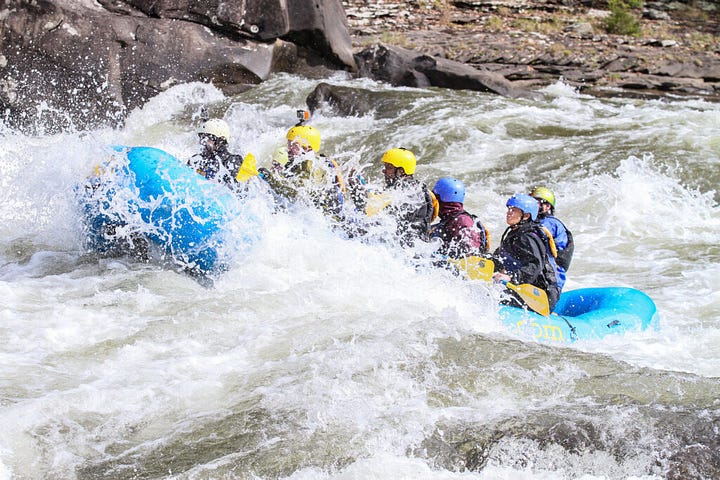
My camera died right before Canyon Doors, a calmer, scenic cliffside section of the river. We stopped to eat, I replaced the camera battery, turned the camera on, and we kept going. The river picked up its pace again as we had to navigate the clusterfuck of boulders in Upper Mash. The payoff was that it positioned us to run the main channel on Lower Mash with enough force to slam through the huge wave-hole at the bottom. For what it’s worth, I think we were finally paddling together as a team. As long as we listened to the guide, he could get us through all of it. My confidence in myself and the group was at an all time high.
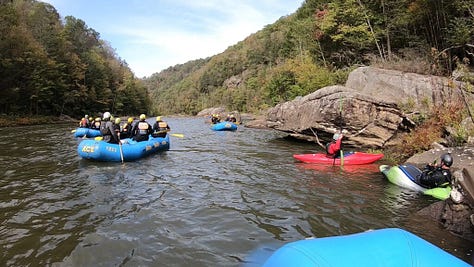
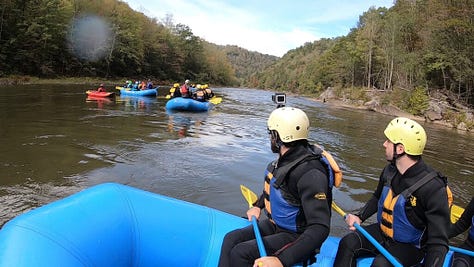
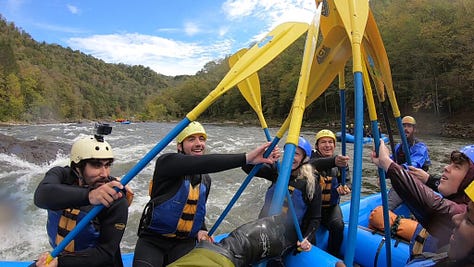
The only big rapid left was Pure Screaming Hell, a Class V monstrosity known for its disastrously big Hell Hole. Here, you paddle for your life and do everything the guide tells you. Unfortunately, my camera died before we got there, but this video does a good job describing it:
From what I can remember, Bobby steered us on the tongue just left of it for an easier line. I only had a second going by to stare into the face of oblivion. We got through it in good standing, but it did give some boaters after us a thrashing – luckily nowhere near the undercut boulders.
This is a scary river. If you look up documentation about it, pretty much every section with a high rating is loaded with bad rocks. Some areas like Tumblehome are completely sieved out. None of it can be done without a guide or proper whitewater training. But despite the threats, I just can’t pass up the chance to see the Gauley on dam season. Even if it means I have to spend one boring final hour floating down flatwater to the takeout. It was late afternoon by then, and all I could think about was beer and pizza.
I went back to the lodge restaurant for both, slept in a cabin tent, and hiked back to the Thurmond station the next day.

